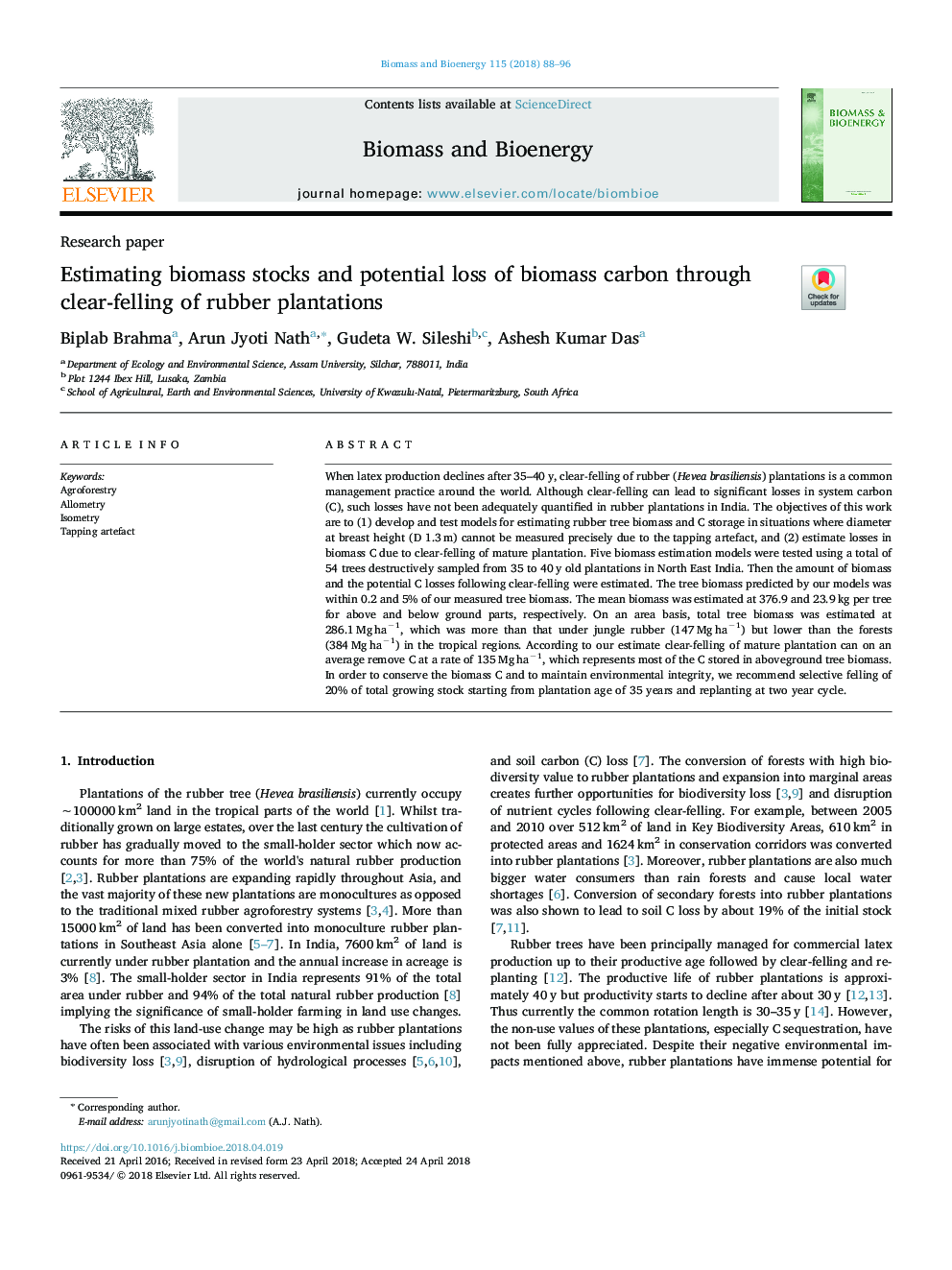| Article ID | Journal | Published Year | Pages | File Type |
|---|---|---|---|---|
| 7062855 | Biomass and Bioenergy | 2018 | 9 Pages |
Abstract
When latex production declines after 35-40â¯y, clear-felling of rubber (Hevea brasiliensis) plantations is a common management practice around the world. Although clear-felling can lead to significant losses in system carbon (C), such losses have not been adequately quantified in rubber plantations in India. The objectives of this work are to (1) develop and test models for estimating rubber tree biomass and C storage in situations where diameter at breast height (D 1.3â¯m) cannot be measured precisely due to the tapping artefact, and (2) estimate losses in biomass C due to clear-felling of mature plantation. Five biomass estimation models were tested using a total of 54 trees destructively sampled from 35 to 40â¯y old plantations in North East India. Then the amount of biomass and the potential C losses following clear-felling were estimated. The tree biomass predicted by our models was within 0.2 and 5% of our measured tree biomass. The mean biomass was estimated at 376.9 and 23.9â¯kg per tree for above and below ground parts, respectively. On an area basis, total tree biomass was estimated at 286.1â¯Mgâ¯haâ1, which was more than that under jungle rubber (147â¯Mgâ¯haâ1) but lower than the forests (384â¯Mgâ¯haâ1) in the tropical regions. According to our estimate clear-felling of mature plantation can on an average remove C at a rate of 135â¯Mgâ¯haâ1, which represents most of the C stored in aboveground tree biomass. In order to conserve the biomass C and to maintain environmental integrity, we recommend selective felling of 20% of total growing stock starting from plantation age of 35 years and replanting at two year cycle.
Keywords
Related Topics
Physical Sciences and Engineering
Chemical Engineering
Process Chemistry and Technology
Authors
Biplab Brahma, Arun Jyoti Nath, Gudeta W. Sileshi, Ashesh Kumar Das,
